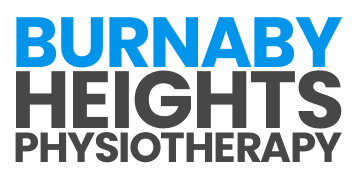At Burnaby Heights Physiotherapy, we excel in treating gluteal tendinopathy with unique, effective strategies. Our Burnaby clinic focuses on reducing symptoms and enhancing overall well-being through personalized physiotherapy services.
Understanding Gluteal Tendinopathy
Gluteal tendinopathy is a common condition affecting the tendons connecting the gluteal muscles to the hip bone. It’s often characterized by pain and tenderness in the hip and outer thigh area, particularly during movement. This condition can significantly impact mobility and quality of life, making effective treatment essential.
Causes and Risk Factors
Several factors contribute to the development of gluteal tendinopathy, including:
- Overuse or repetitive stress injuries, common in athletes and active individuals.
- Imbalances or weaknesses in the hip and gluteal muscles.
- Poor biomechanics and gait abnormalities.
- Aging and decreased tendon elasticity.
Identifying these factors early is crucial for successful treatment and prevention of further damage.
Symptoms to Watch For
Symptoms associated with gluteal tendinopathy may include:
- Pain and tenderness around the hip and outer thigh.
- Difficulty with activities that put strain on the hip, such as climbing stairs or running.
- Swelling or stiffness in the affected area.
- A noticeable decrease in hip mobility.
Recognizing these symptoms early and seeking professional care can lead to more effective treatment outcomes.
Our Physiotherapy-Led Approach to Treatment
Our comprehensive approach to treating gluteal tendinopathy centers on personalized physiotherapy to manage symptoms and facilitate recovery.
Customized Rehabilitation Programs
We develop rehabilitation programs tailored to the needs of each client, focusing on:
- Targeted Stretching Exercises: To alleviate tension in the gluteal tendons and improve flexibility.
- Strengthening Exercises: Designed to bolster the gluteal muscles and surrounding areas, reducing the risk of recurrence.
- Manual Therapy: Techniques such as massage and soft tissue work to increase blood flow and relieve discomfort.
Preventive Strategies and Education
Prevention is key to managing gluteal tendinopathy effectively. We provide:
- Activity Modification Advice: Guidance on altering activities and exercise routines to avoid aggravating the condition.
- Ergonomic and Postural Recommendations: Tips for improving posture and ergonomics in daily activities and work environments.
- Self-Management Techniques: Education on self-care practices to alleviate symptoms and prevent future episodes.
Other Services We Offer
Burnaby Heights Physiotherapy offers a wide range of treatments, delivered by our team of highly skilled professionals committed to providing attentive and personalized care.
- Physiotherapy
- Acupuncture
- Registered Massage Therapy
- Hand Therapy
- Intramuscular Stimulation Therapy
- Shockwave Therapy
- Concussion Clinic
- Vestibular Rehab
Why Choose Burnaby Heights Physiotherapy for Gluteal Tendinopathy Treatment?
Choosing Burnaby Heights Physiotherapy for your gluteal tendinopathy treatment in Burnaby means you’ll receive:
- Experienced Physiotherapy Care: Our team is experienced in treating conditions like gluteal tendinopathy, employing evidence-based practices to ensure optimal outcomes.
- Tailored Treatment Plans: We understand each case is unique, creating personalized rehabilitation programs to address individual needs.
- Comprehensive Support: We offer not just physical treatment, but also emotional and educational support to empower our clients on their path to recovery.
Begin Your Path to Relief
If you’re struggling with the discomfort of gluteal tendinopathy, Burnaby Heights Physiotherapy in Burnaby is here to support you. Our dedicated team is prepared to assist you with comprehensive, physiotherapy-led treatment plans. Contact us today to book an appointment and take your first step toward effective relief and improved mobility.
Don’t Let These Hip Conditions Keep You Down
|
|
Gluteal Tendinopathy Treatment Burnaby FAQs
What Can I Expect During My First Visit for Gluteal Tendinopathy Treatment?
During your initial appointment, the healthcare practitioner will conduct a comprehensive assessment of your condition. This involves discussing your medical history, symptoms, and any activities that may exacerbate your pain. You may undergo a physical examination to evaluate hip mobility, strength, and areas of tenderness. The goal is to understand the severity and root cause of your tendinopathy. Based on this evaluation, a preliminary treatment plan will be discussed, aiming to address your specific needs and set realistic expectations for your recovery journey.
Can Gluteal Tendinopathy Be Prevented?
While it’s not always possible to prevent gluteal tendinopathy, certain strategies can reduce the risk of developing this condition. These include maintaining a healthy weight to lessen the strain on your hips and practicing good posture to avoid unnecessary stress on the tendons. Regular exercise that includes strength training and flexibility exercises can help keep the muscles around the hip strong and balanced, reducing the risk of overuse injuries. It’s also important to warm up properly before engaging in physical activity and to increase the intensity of exercises gradually to avoid sudden overloading of the tendons.
How Long Does Recovery Take?
The recovery time for gluteal tendinopathy varies depending on the severity of the condition and the individual’s response to treatment. Generally, with appropriate management, many people begin to experience significant improvement within a few weeks. However, complete recovery may take several months. It’s important to follow the treatment plan recommended by your healthcare provider closely and to pace yourself as you return to normal activities. Overloading the tendon too soon can delay recovery, so a gradual approach to increasing activity levels, guided by pain and discomfort levels, is crucial for a successful outcome.
Can Gluteal Tendinopathy Recur After Treatment?
Yes, gluteal tendinopathy can recur after treatment, especially if the underlying causes, such as biomechanical issues or lifestyle factors, aren’t adequately addressed. Recurrence can be minimized by adhering to a comprehensive treatment plan that includes not only initial relief of symptoms but also strategies for prevention. This may involve continuing with specific exercises, making ergonomic adjustments at work or during activities, and periodically consulting with your healthcare provider to monitor and manage any potential risks. Awareness and proactive management are key to reducing the likelihood of recurrence.
Burnaby Heights Physiotherapy
3970 Hastings St #210, Burnaby, BC V5C 6C1, Canada
604 – 294 – 3911
Hours:
Monday to Friday: 7:00 AM – 8 PM
Saturday: 7:00 AM – 2:00 PM
Sunday: Closed


